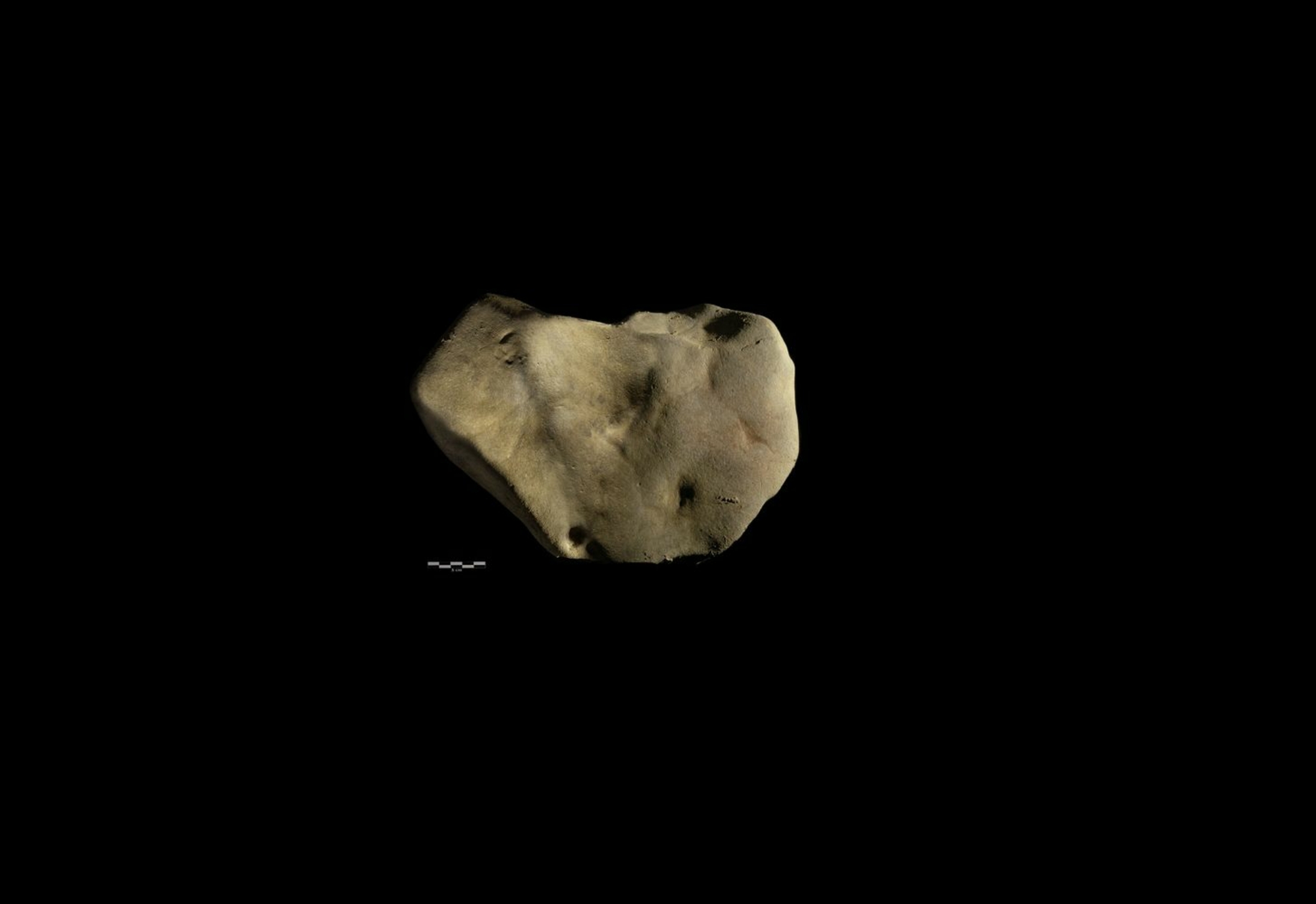
- Home
- The engraved pebble from Étiolles
- Comparisons and interpretations
- A stone that tells a story
The animals and the therianthrope can be interpreted as characters in a story, even if certain aspects are unclear.
For example, on the front of the pebble there is an outgrowth on the hoof of the horse that looks like a sort of rudimentary foot. This detail gives a discreet human touch to this otherwise very realistic animal. While there is no physical link between the two subjects on this side, it is difficult not to place them together in the same scene: is the horse the victim of the therianthrope, which is following him and threatening him with his arm raised? There is a clear link between the two sides of the pebble due to the similarities in the positions of the horses. However, on the back the equid is accompanied by reindeer, positioned the other way round. Engraving requires a lot of movement on the part of the artist, who must turn the pebble in their hands as they add the figures. This series of images appears to represent a tale, the progression of a story told in images, the thread of which could be decided by the reader.
The location of the pebble, left intentionally in the circle of stones surrounding an imposing domestic hearth, is also significant. On other Magdalenian sites, many engraved stones were exposed to flames, and even fractured due to thermal shock. Exposing stones to fire was an important stage in a cycle. Due to the effect of the heat, the stones turned red and broke, resulting in the destruction of the rock and the images on it. Certain fragments were then recovered to be engraved again. At Étiolles, while red in places, the pebble remains nonetheless intact, which means it was not exposed to fire for a long time or often.
The animal species depicted are the usual prey of the Magdalenians, reindeer and horses, and have marks suggesting wounds. Given its depiction of hunted animals, an early hypothesis was that the pebble is a sort of effigy to be destroyed: burning the engraved stone until it came apart and the image disintegrated would complete the process. Around the hearth at Étiolles, it would appear that this process hadn’t yet been completed, and the stone hadn’t yet shattered due to the heat. However, perhaps what we consider to be an anomaly in fact reflects a different rite.



